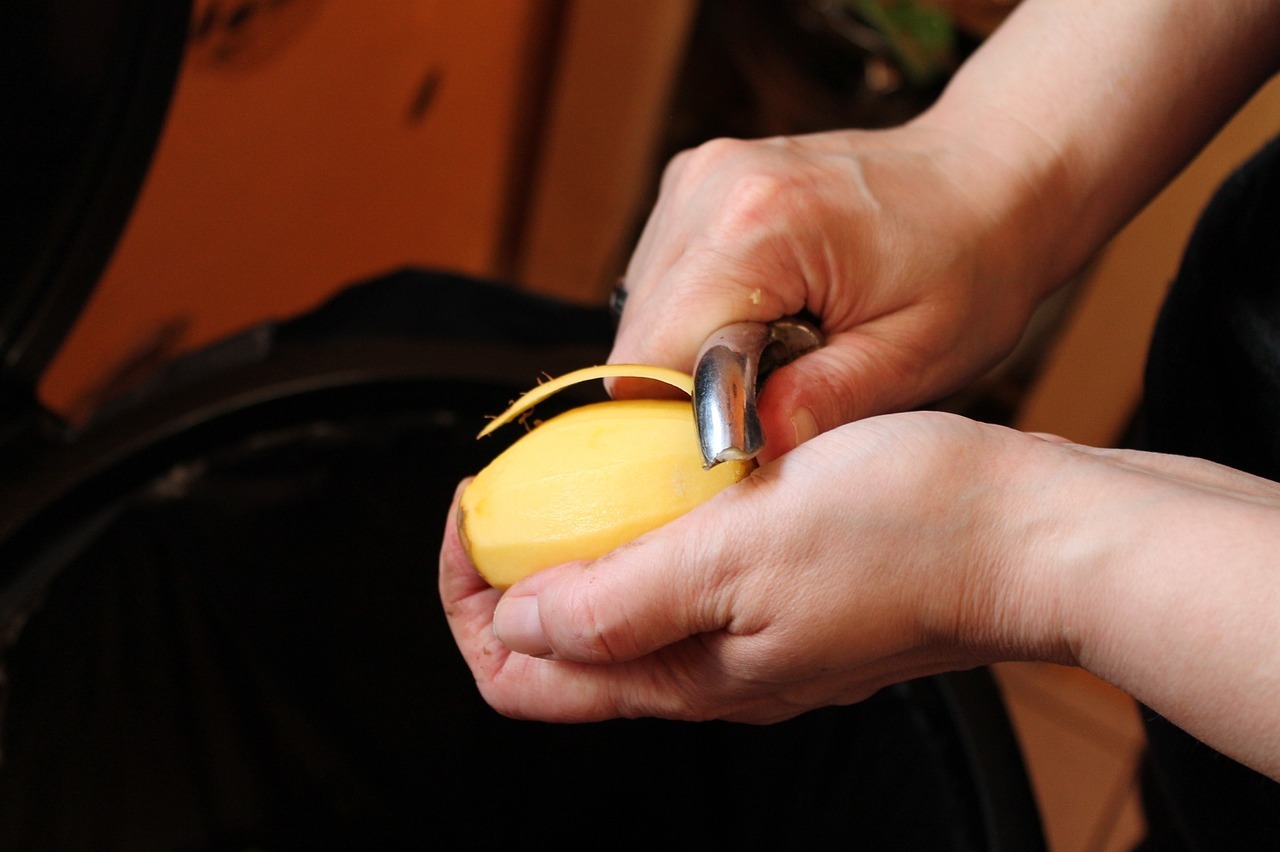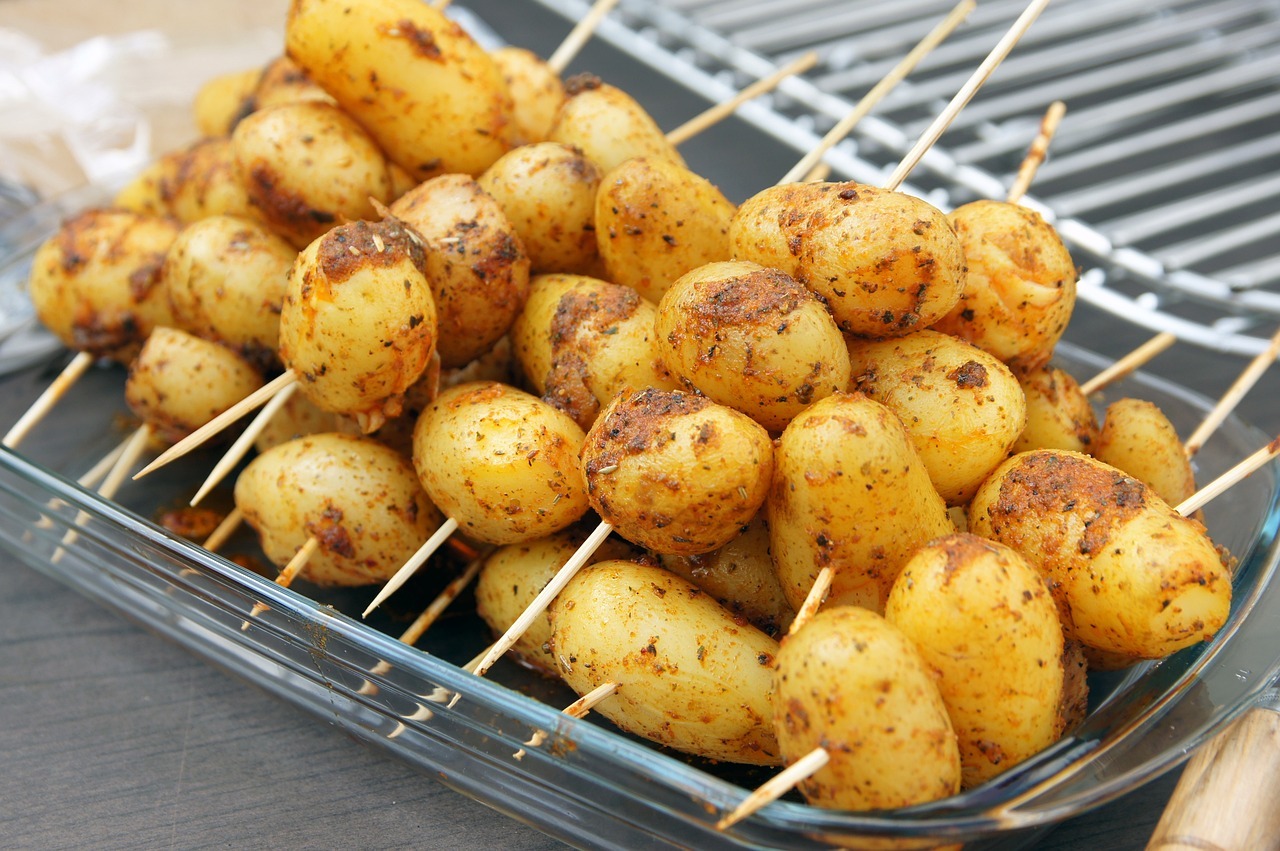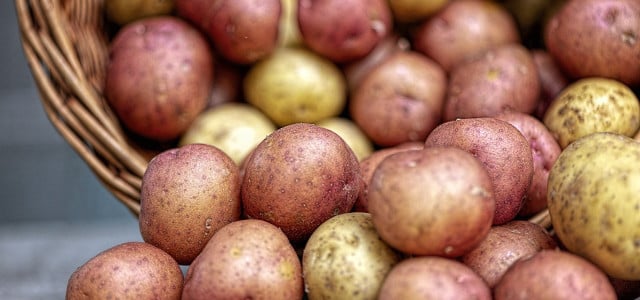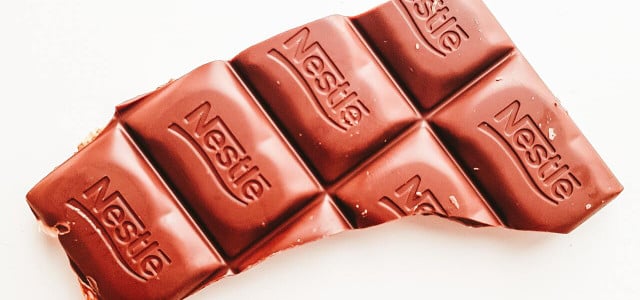Can you freeze potatoes? What about raw potatoes? From choosing the right spuds to mastering proper storage methods, here’s what you need to know for the best results.
Potatoes are versatile, delicious and a staple in many households. They’re enjoyed in homemade cooking, from crispy fries to creamy mashed potatoes. But what happens when you find yourself with an abundance of potatoes and worry about them spoiling? Can you freeze potatoes? What about raw potatoes?
It turns out that freezing potatoes can be a practical solution to extend their shelf life and reduce food waste. In this article, we delve into the world of freezing potatoes — exploring whether it’s possible, how to do it effectively raw and cooked, and the benefits it offers.
Note: If your potatoes have already turned green, they’re likely not good to eat. Learn here how to tell when potatoes are bad.
Can You Freeze Raw Potatoes? Key Considerations

While it is possible to freeze raw potatoes, it is generally not recommended. Raw potatoes contain a high water content, which can lead to a change in texture and quality when frozen. The water inside the potatoes forms ice crystals during freezing, which can cause the cell walls to rupture. As a result, the potatoes may become mushy and lose their original texture once thawed.
Furthermore, at low temperatures, the natural starch turns into sugar, making the tubers unusually sweet. While this doesn’t make them inedible, it does affect the taste. For these reasons, raw potatoes are #2 on our list of foods that don’t belong in the freezer.
However, there are exceptions to this rule. If you intend to use frozen potatoes for specific purposes, like making mashed potatoes or pancakes (like these tasty vegan latkes), freezing them raw can work. These recipes often involve cooking or mashing the potatoes after thawing, which helps mitigate the texture changes caused by freezing.
If you decide to freeze them raw, it’s crucial to take certain steps to maintain their quality.
How to Freeze Raw Potatoes:
- Wash and peel them, removing any blemishes or sprouts.
- Cut your potatoes into the desired size or shape for the intended recipe.
- Blanch the pieces by briefly submerging them in boiling water for 2-3 minutes. Blanching deactivates enzymes that can cause discoloration and off-flavors.
- After blanching, cool the potatoes immediately by transferring them to an ice bath. This halts the cooking process and prevents them from becoming overcooked.
- Once cooled, drain the pieces thoroughly and pat them dry to remove excess moisture. At this stage, you can either package the blanched raw potatoes for freezing or proceed with your recipe.
Remember that raw potatoes may not retain the same texture as fresh ones once thawed. Therefore, using them in cooked dishes rather than as standalone items is best. Consider incorporating them into soups, stews, casseroles or other recipes where the change in texture won’t be as noticeable.
Did You Know? Potato wraps are an effective natural remedy for colds and scratchy throats.
How to Freeze Cooked Potatoes



When answering “Can you freeze potatoes?” one of the biggest considerations is their high water content, which can make freezing potatoes a bit tricky. However, with proper preparation and techniques, you can successfully freeze potatoes and enjoy their flavors and textures even months later. Freezing potatoes opens up a world of possibilities for meal planning and preserving seasonal harvests. Follow these instructions for the best results.
How to Freeze Potatoes:
- Choose the right potatoes. Not all potatoes are created equal when it comes to freezing. Some varieties, like russet and Yukon gold, tend to freeze well due to their starch content. These types maintain their structure and taste after freezing, making them ideal candidates for various dishes. It’s recommended to avoid waxy variations, such as red or fingerling, as their texture can become mealy and grainy when frozen.
- Prepare them properly for freezing. Make sure the potatoes are thoroughly washed and any blemishes or sprouts removed. Once you’ve cooked them, or if you’re dealing with leftovers, ensure they are completely cool before packaging them.
- Package them carefully. Proper packaging is key to maintaining quality. Divide them into portion sizes suitable for your needs. For optimal results, place the potatoes in airtight freezer-safe containers or heavy-duty freezer bags, removing as much air as possible. Label each package with the date to keep track of their freshness.
- Place your potatoes in a single layer in the freezer. To freeze the prepared potatoes, make sure your freezer is set at 0°F (-18°C) or below. Arrange the containers or bags in a single layer to allow for efficient freezing. It’s essential to freeze them as quickly as possible to preserve their texture and flavor.
Ready to Thaw?
When you’re ready to use the frozen potatoes, simply thaw them in the refrigerator overnight or use the defrost setting on your microwave. Avoid refreezing previously frozen potatoes to maintain their quality.
Tip: Don’t throw the water away! Check out our article on how to use potato water.


Freezing potatoes can be a practical way to reduce food waste and enjoy this versatile vegetable throughout the year. With proper preparation, packaging and freezing techniques, you can extend the shelf life of your food.
So, the next time you find yourself with an abundance of potatoes, remember that freezing them is an excellent option to preserve their deliciousness and minimize food waste.
Looking for more ways to use and enjoy potatoes? Here’s some inspiration:
- Recipe: How to Make Potato Milk
- Leftover Mashed Potato Ideas: 3 Delicious Recipes
- Potato Cheese Recipe: The Cheapest Vegan Cream Cheese
- Potato Printing: How to Make and Use Potato Stamps
- Storing Potatoes: 8 Tips to Keep Them Fresh for Months
Read more:
- Reuse Vegetable Scraps: Skip the Trash and Put Food Back on Your Plate
- Storing Food Correctly: 7 Tricks for Vegetables, Fruits and Leftovers
- Can You Freeze Flour Tortillas? Here’s How to Go About It
Do you like this post?








